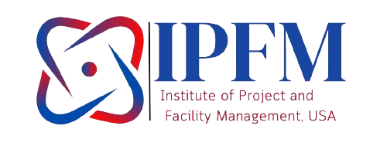CERTIFIED REGISTERED CONSTRUCTION PROJECT MANAGER (CRCPM)
About the Course
The course objectives for a Certified Registered Construction Project Manager program are designed to equip individuals with the specialized knowledge and skills needed to effectively manage construction projects from inception to completion. These objectives aim to prepare participants for the unique challenges and intricacies of overseeing construction projects, ensuring they are completed on time, within budget, and to the desired quality standards.
Course Content
1 Construction Practices
- 1.1 Introduction
- 1.2 Construction Industry
- 1.3 Construction Project
- 1.4 Project Stages
- 1.5 Owner
- 1.6 Architect-Engineer
- 1.7 Prime Contractor
- 1.8 Competitive Bidding
- 1.9 Negotiated Contracts
- 1.10 Combined Bidding and Negotiation
- 1.11 Subcontracting
- 1.12 Design-Bid-Construct
- 1.13 Fast Tracking
- 1.14 Construction Contract Services
- 1.15 Construction Services
- 1.16 Design-Construct
- 1.17 Construction Management
- 1.18 Fixed-Sum Contract
- 1.19 Cost-Plus-Fee Contracts
- 1.20 Work-by-Force Account
- 1.21 Turnkey and BOT Contracts
- 1.22 Speculative Construction
- 1.23 Management during the Design Phase
- 1.24 Management of Field Construction
- 1.25 Project Manager
- 1.26 Project Manager Qualifications
2. Management System
- 2.1 Need for Project Management
- 2.2 Project Management Characteristics
- 2.3 Discussion Viewpoint
- 2.4 Management Procedures
- 2.5 Time and Cost Management
- 2.6 Planning and Scheduling
- 2.7 CPM Procedure
- 2.8 Time Monitoring and Control
- 2.9 Project Cost System
- 2.10 Estimating the Project
- 2.11 Project Cost Accounting
- 2.12 Resource Management
- 2.13 Project Financial Control
- 2.14 Automating Project Management Tasks
- 2.15 Manual Methods
- 2.16 Discussion Format
- 2.17 Example Project
3 Project Cost Estimating
- 3.1 Project Cost System
- 3.2 Preliminary Cost Estimates
- 3.3 Final Cost Estimate
- 3.4 Highway Bridge
- 3.5 Quantity Survey
- 3.6 Management Input
- 3.7 Field Supervision
- 3.8 Construction Methods
- 3.9 General Time Schedule
- 3.10 Construction Equipment
- 3.11 Summary Sheets
- 3.12 Material Costs
- 3.13 Labor Costs
- 3.14 Indirect Labor Costs
- 3.15 Labor Unit Costs
- 3.16 Equipment Cost Estimating
- 3.17 Equipment Expense
- 3.18 Determination of Equipment Cost Rates
- 3.19 Equipment Production Rates
- 3.20 Bids from Subcontractor
- 3.21 Project Overhead
- 3.22 Home Office Overhead
- 3.23 Markup
- 3.24 Contract Bonds
- 3.25 Recap Sheet
- 3.26 Project Budget
4 Project Planning
- 4.1 CPM Procedure
- 4.2 Planning Phase
- 4.3 Job Activities
- 4.4 Job Logic
- 4.5 Restraints
- 4.6 Beginning-to-End Planning
- 4.7 Top-Down Planning and the Work Breakdown Structure
- 4.8 Precedence Notation
- 4.9 Precedence Diagram
- 4.10 Network Format
- 4.11 Lag Relationships
- 4.12 Precedence Diagram for Highway Bridge
- 4.13 Value of Precedence Network
- 4.14 Repetitive Operations
- 4.15 Network Interfaces
- 4.16 Master Network
- 4.17 Subnetworks
- 4.18 Computer Applications for Planning
5 Project Scheduling
- 5.1 Scheduling Procedure
- 5.2 Activity Times
- 5.3 Rules for Estimating Activity Durations
- 5.4 Estimating Activity Durations
- 5.5 Time Contingency
- 5.6 Project Weather Delays
- 5.7 Network Time Computations
- 5.8 Early Activity Times
- 5.9 Project Duration
- 5.10 Late Activity Times
- 5.11 Total Float
- 5.12 Critical Path
- 5.13 Free Float
-
5.14 Activity Time Information
-
5.15 Float Paths
-
5.16 Early-Start Schedule
-
5.17 Tabular Time Schedules
-
5.18 Activities and Calendar Dates
-
5.19 Calendars for Weather
-
5.20 Sorts
-
5.21 Lags between Activities
-
5.22 Pipeline Scheduling Computations
-
5.23 Pipeline Summary Diagram
-
5.24 Interface Computations
-
5.25 Hammock Activity
-
5.26 Milestones
-
5.27 Time-Scaled Networks
-
5.28 Nature and Significance of Floats
-
5.29 Bar Charts
-
5.30 Bar Chart for Repetitive Operations
-
5.31 Computer Applications for Scheduling
6 Production Planning
- 6.1 Introduction
- 6.2 Planning Team
- 6.3 Reengineering the Project
- 6.4 Planning for Production
- 6.5 Support Planning
- 6.6 Technical Problems
- 6.7 Personnel Planning
- 6.8 Safety Planning
- 6.9 Planning for Quality
- 6.10 Material Ordering and Expediting
- 6.11 Material Handling, Storage, and Protection
- 6.12 Equipment Planning
- 6.13 Production Methods
- 6.14 Activity Planning
- 6.15 Production Checklists
- 6.16 Look-Ahead Schedules
- 6.17 Planning the Paperwork
- 6.18 Putting the Plans on Paper
7 Project Time Acceleration
- 7.1 Time Schedule Adjustments
- 7.2 Need for Time Reduction
- 7.3 General Time-Reduction Procedure
- 7.4 Shortening the Longest Time Path
- 7.5 Project Direct Costs
- 7.6 Variation of Activity Direct Cost with Time
- 7.7 Project Indirect Costs
- 7.8 Time-Cost Trade-off by Computer
- 7.9 Practical Aspects of Time Reduction
- 7.10 Reduction of the Highway Bridge Duration
- 7.11 Time Reduction of Highway Bridge by Expediting
- 7.12 Least-Cost Expediting of the Highway Bridge
- 7.13 Limitations on Time-Reduction Steps
- 7.14 Variation of Total Project Cost with Time
- 7.15 Expedited Highway Bridge Schedule
- 7.16 Milestone and Interface Events
- 7.17 Project Extension
8 Resource Management
- 8.1 Objective
- 8.2 Project Resource Management
- 8.3 Aspects of Resource Management
- 8.4 Tabulation of Labor Requirements
- 8.5 Project Labor Summary
- 8.6 Variation in Labor Demand
- 8.7 Manpower Leveling
- 8.8 Heuristic Manpower Leveling
- 8.9 Numerical Example
- 8.10 Labor Leveling in Practice
- 8.11 Restricted Labor Supply
- 8.12 Complex Labor Scheduling
- 8.13 Equipment Management
- 8.14 Equipment Scheduling
- 8.15 Software Application
- 8.16 Material Scheduling
- 8.17 Subcontractor Scheduling
- 8.18 Resource Expediting
9 Project Time Management
- 9.1 Time Management System
- 9.2 Aspects of Time Management
- 9.3 Key-Date Schedules
- 9.4 Adjustment of Move-in Date
- 9.5 Detailed Schedules
- 9.6 Progress Measurement
- 9.7 Progress Reporting
- 9.8 Bar Charts
- 9.9 Highway Bridge as of July 14
- 9.10 Weekly Progress Reports
- 9.11 Field Progress Narrative
- 9.12 July 21 Status of Highway Bridge
- 9.13 Progress Analysis
- 9.14 Corrective Action
- 9.15 Network Updating
- 9.16 Manual Updating Calculations
- 9.17 Scheduling Software
- 9.18 Schedule Information on the Job
- 9.19 Project Progress Curves
10 Project Cost System
- 10.1 Objectives of a Cost System
- 10.2 Project Cost Control
- 10.3 Data for Estimating
- 10.4 Project Cost Code
- 10.5 Usage of Project Cost Code
- 10.6 Project Cost Accounting
- 10.7 Labor and Equipment Costs
- 10.8 Cost Accounting Reports
- 10.9 Labor Time Reporting
- 10.10 Time Card Preparation
- 10.11 Measurement of Work Quantities
- 10.12 Work Quantities from Network Activities
- 10.13 Cost Records and Reports
- 10.14 Weekly Labor Reports
- 10.15 Weekly Labor Cost Report
- 10.16 Equipment Cost Accounting
- 10.17 Charging Equipment to the Project
- 10.18 Equipment Time Reports
- 10.19 Weekly Equipment Cost Report
- 10.20 Special Aspects of Equipment Charges
- 10.21 Monthly Cost Forecast
- 10.22 Time-Cost Envelope
- 10.23 Earned Value Management System
- 10.24 Forecasting Final Project Results Using the EVMS
- 10.25 Special Cost Accounting Problems
- 10.26 Production Cost Reduction
- 10.27 Information for Estimating
- 10.28 Postproject Evaluation
- 10.29 Software Applications
- 10.30 Accuracy of Estimating
11 Project Financial Management
- 11.1 Financial Control
- 11.2 Progress Payments
- 11.3 Pay Requests for Unit-Price Contracts
- 11.4 Project Cost Breakdown
- 11.5 Pay Requests for Lump-Sum Contracts
- 11.6 Use of Time-Control Activities for Pay Requests
- 11.7 Pay Requests for Cost-Plus Contracts
- 11.8 Payments to Subcontractors
- 11.9 Schedule of Payments by Owner—Unit-Price Contract
- 11.10 Schedule of Payments by Owner—Lump-Sum Contract
- 11.11 Final Payment
- 11.12 Cash Flow
- 11.13 Cash Disbursement Forecasts
- 11.14 Cash Income Forecasts
- 11.15 Disbursement Controls
- 11.16 Project Changes
- 11.17 Contract Change Orders
- 11.18 Claims
- 11.19 Daily Job Log
12 Scheduling Applications
- 12.1 Role of the Schedule
- 12.2 Operational Schedules
- 12.3 Schedule Presentation Formats
- 12.4 Schedule Analysis to Determine Project Delays
- 12.5 Impacted Baseline Schedule
- 12.6 But-for or Collapsed As-Built Schedule
- 12.7 Legal Schedules
- 12.8 Handling Weather Effects and Other Unknowns
- 12.9 Presenting the Schedule
Programme Duration: 35 Contact Hours
Programme Fee: $1500
(Note: The fee varies based on Country)

